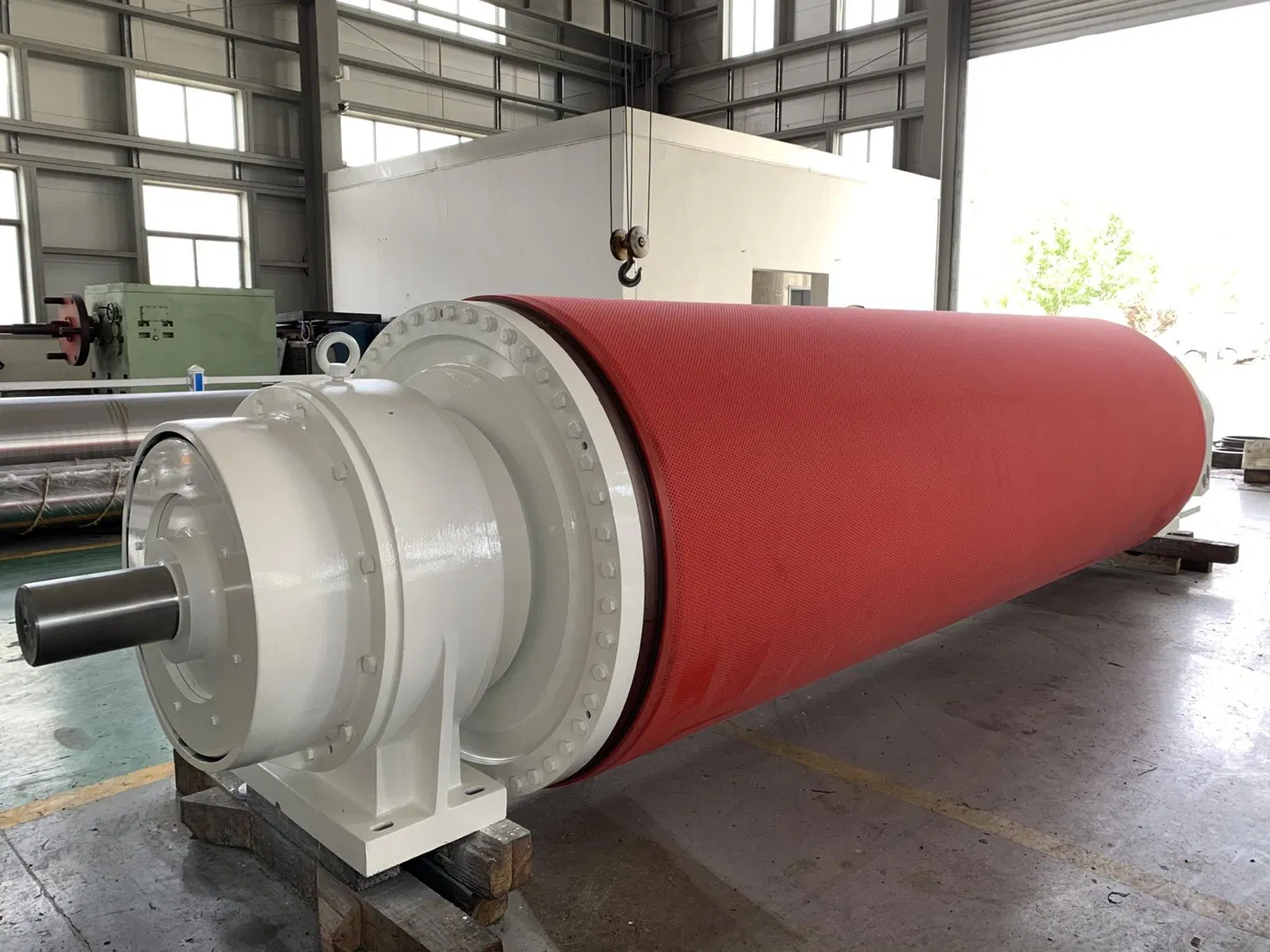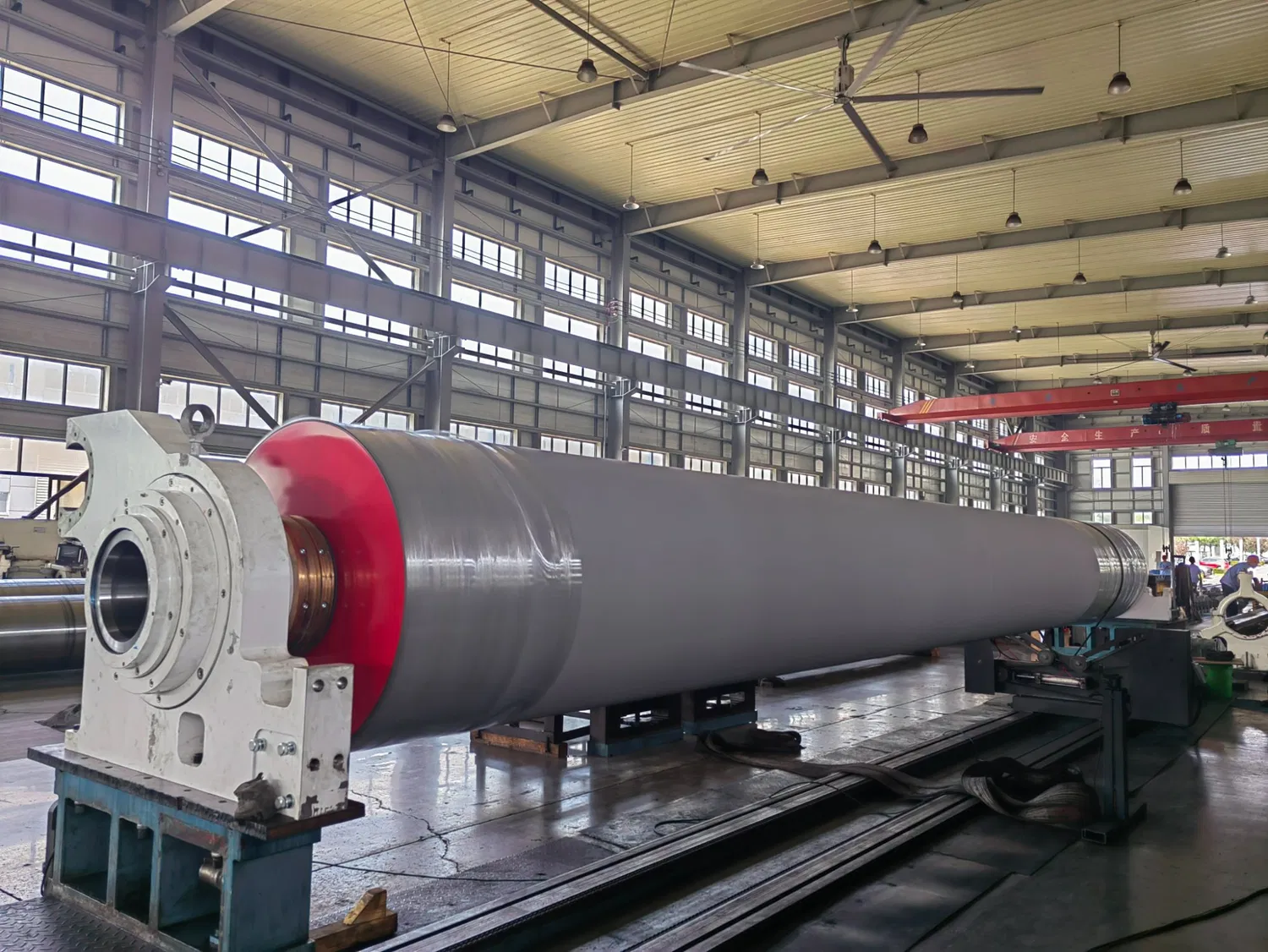Have you ever stopped to think about what goes into making the paper we use every single day? From newspapers and books to packaging and tissues, paper is ubiquitous. But behind every sheet lies a complex, high-speed manufacturing process, and at the heart of this process are the unsung heroes: the rolls. These aren't just any rolls; they are precision-engineered components, crucial to the quality, efficiency, and consistency of paper production. Frankly speaking, without a top-tier Paper machine roll manufacturer, the global paper industry as we know it simply wouldn't exist.
In this comprehensive guide, we'll delve deep into the world of paper machine rolls, exploring their critical functions, the intricate manufacturing processes involved, and what sets a leading manufacturer apart. We'll also touch upon the challenges faced and the innovations driving this specialized field forward.
The Critical Role of Rolls in Paper Production
To truly appreciate the importance of a Paper machine roll manufacturer, it's essential to understand their function within the broader papermaking process. Papermaking is a continuous operation, often running 24/7, where a slurry of wood fibers and water is transformed into a finished paper product. This transformation involves several stages: forming, pressing, drying, and calendering, each relying heavily on specialized rolls.
In the forming section, rolls help distribute the fiber slurry evenly onto a moving wire mesh, initiating the dewatering process. In the press section, massive rolls apply immense pressure to squeeze out water, significantly increasing the sheet's dry content. The dryer section utilizes heated rolls to evaporate remaining moisture, while the calender section employs smooth, polished rolls to iron the paper, enhancing its surface properties like smoothness, gloss, and thickness.
The demands on these rolls are immense. They must withstand extreme temperatures, high pressures, corrosive chemicals, and constant abrasion, all while maintaining precise dimensions and surface finishes. Any deviation in a roll's performance can lead to costly downtime, defects in the paper, and significant financial losses for paper mills. This is why the expertise of a dedicated Paper machine roll manufacturer is not just beneficial, but absolutely indispensable. They are the backbone, ensuring the continuous, high-quality output that the world relies on.
Interestingly enough, the variety of rolls is vast, each designed for a specific purpose:
- Suction Rolls: Used in the forming and press sections to remove water through vacuum.
- Press Rolls: Apply mechanical pressure to dewater the paper web. These often feature specialized covers.
- Dryer Rolls: Large, heated cylinders that evaporate moisture from the paper.
- Calender Rolls: Used in sets to smooth and densify the paper surface.
- Reel Spools and Winder Drums: For winding the finished paper into large parent rolls.
- Guide Rolls: Ensure the paper web travels smoothly through the machine.

What Defines a Top-Tier Paper Machine Roll Manufacturer?
Not all manufacturers are created equal. A leading Paper machine roll manufacturer distinguishes itself through a combination of cutting-edge technology, profound material science knowledge, and an unwavering commitment to quality. It's not just about making a roll; it's about crafting a precision instrument designed for peak performance in demanding environments.
Advanced Materials and Engineering Expertise
The foundation of a superior roll lies in its material. Top manufacturers invest heavily in research and development to select and process the best alloys, composites, and coatings. This includes specialized steels for roll bodies, advanced polymers and ceramics for covers, and sophisticated bonding agents. The choice of material directly impacts the roll's durability, resistance to wear and corrosion, and thermal stability. Many experts agree that the ability to innovate with materials is a key differentiator.
Precision Manufacturing and Customization
The journey from raw material to a finished roll involves a series of highly precise manufacturing steps. This includes meticulous machining, grinding, and balancing. For instance, achieving the perfect crown (a slight taper or curve) on a roll is critical for uniform pressure distribution across the paper web. A slight imperfection can lead to uneven paper thickness or moisture profiles. Leading manufacturers utilize state-of-the-art CNC machines, laser alignment systems, and dynamic balancing equipment to ensure tolerances are measured in microns.
Furthermore, the ability to produce custom paper mill rolls is paramount. Every paper machine is unique, with specific dimensions, operating conditions, and paper grades. A manufacturer must be able to design and produce rolls that are perfectly tailored to these individual requirements, optimizing performance and integration. This often involves close collaboration with the paper mill's engineers.
Rigorous Quality Control and Testing
Quality assurance isn't an afterthought; it's integrated into every stage of the manufacturing process. This includes non-destructive testing (NDT) methods like ultrasonic testing, magnetic particle inspection, and eddy current testing to detect internal flaws. Surface roughness, hardness, and concentricity are meticulously checked. Dynamic balancing, in particular, is crucial to prevent vibrations that can cause machine wear and paper defects at high operating speeds. A truly reliable Paper machine roll manufacturer will have a comprehensive quality management system in place, often certified to international standards.
The Manufacturing Process: From Raw Material to Precision Component
The creation of a paper machine roll is a fascinating journey that combines traditional craftsmanship with modern technological prowess. Let's break down the typical steps involved in precision roll manufacturing:
1. Design and Engineering
It all begins with detailed design. Engineers use advanced CAD/CAM software to model the roll, considering its dimensions, material properties, operating conditions, and the specific function it will perform. This phase also involves calculating stress loads, thermal expansion, and determining the optimal crown profile.
2. Material Selection and Preparation
Based on the design, the appropriate steel alloy (e.g., forged steel, cast iron, stainless steel) or composite material is selected. For larger rolls, the body might be cast or forged. Smaller rolls or specific components might be machined from solid billets.
3. Machining and Grinding
This is where the raw material begins to take shape. Large lathes turn the roll body to its approximate dimensions. Following this, precision grinding machines, often equipped with automated controls, grind the roll surface to the exact required diameter, concentricity, and surface finish. This step is critical for achieving the tight tolerances necessary for smooth operation and uniform paper quality.
4. Roll Covering (if applicable)
Many rolls, especially press rolls, require a specialized cover (e.g., rubber, polyurethane, composite) to enhance their performance, provide specific grip, or resist wear and chemicals. The application of these covers is a specialized process, often involving vulcanization or advanced bonding techniques, followed by further grinding to achieve the final dimensions and surface properties.

5. Balancing
High-speed rotation demands perfect balance. Rolls are dynamically balanced on specialized machines to eliminate vibrations that could lead to machine damage, bearing failure, or defects in the paper. Even a slight imbalance can cause significant issues at speeds exceeding 100 km/h.
6. Surface Treatment and Finishing
Depending on the roll's function, it might undergo additional surface treatments like hard chrome plating, thermal spraying, or specialized coatings to improve wear resistance, corrosion protection, or release properties. The final step often involves polishing to achieve the desired surface smoothness.
7. Final Inspection and Shipment
Before leaving the factory, every roll undergoes a rigorous final inspection, verifying all dimensions, surface qualities, and balance specifications. Once approved, the rolls are carefully packaged to prevent damage during transit and shipped to paper mills worldwide. Many leading paper production equipment suppliers also offer installation support and ongoing maintenance services.
Challenges and Innovations in Roll Manufacturing
The paper industry is constantly evolving, and so too are the demands placed on paper machine rolls. Manufacturers face several ongoing challenges, which in turn drive innovation.
Overcoming Operational Challenges
Rolls operate in extremely harsh environments. They are subjected to:
- High Temperatures: Especially in dryer sections.
- Corrosive Chemicals: From pulping and bleaching processes.
- Abrasion and Wear: Constant contact with the paper web and other machine components.
- High Loads and Pressures: Particularly in press and calender sections.
- Vibration and Fatigue: Due to high-speed rotation and continuous operation.
These factors lead to wear, corrosion, and potential structural fatigue, necessitating robust designs and materials.
Driving Innovation
To combat these challenges and improve performance, a forward-thinking Paper machine roll manufacturer continuously innovates:
- Advanced Coatings: Developing new ceramic, metallic, and polymer coatings that offer superior wear resistance, non-stick properties, and corrosion protection. These coatings can significantly extend roll life and reduce maintenance.
- Smart Rolls: Integrating sensors into rolls to monitor temperature, vibration, and pressure in real-time. This data allows for predictive maintenance, preventing costly unplanned downtime and optimizing operational efficiency. In my experience, this is one of the most exciting areas of development.
- Lightweight Materials: Exploring composite materials for roll bodies to reduce weight, which can lead to energy savings and reduced strain on bearings.
- Energy Efficiency: Designing rolls that require less energy for heating or rotation, contributing to the paper mill's overall sustainability goals.
- Digitalization: Utilizing digital twins and advanced simulation software to model roll performance under various conditions, optimizing designs before physical production.
Choosing the Right Partner: Key Considerations
Selecting the right Paper machine roll manufacturer is a strategic decision for any paper mill. It's a long-term partnership that impacts productivity, product quality, and profitability. Here are critical factors to consider:
Experience and Reputation
Look for manufacturers with a proven track record in the industry. Longevity often signifies stability, expertise, and a deep understanding of papermaking challenges. Check for testimonials, case studies, and references from other paper mills.
Technical Expertise and R&D Capabilities
Does the manufacturer have a strong engineering team? Do they invest in research and development? A company that is actively innovating and pushing the boundaries of roll technology will be better equipped to meet your future needs and offer cutting-edge solutions for precision roll manufacturing.
Customization and Flexibility
As mentioned, every paper machine is unique. The ability to provide highly customized solutions, from material selection to specific roll covers and dimensions, is crucial. A good manufacturer will work closely with your team to understand your specific requirements and offer tailored solutions.
Quality Assurance and After-Sales Support
Beyond the initial purchase, consider the manufacturer's commitment to quality control and their after-sales support. Do they offer installation assistance, maintenance services, roll repair, and re-grinding? A comprehensive service offering can significantly extend the lifespan of your rolls and minimize operational disruptions. To be honest, reliable support can save you a fortune in the long run.
Global Reach and Local Presence
For multinational paper companies, a manufacturer with a global footprint can offer consistent quality and service across different locations. However, a strong local presence can also be beneficial for quick response times and personalized service.
The Future Landscape for Paper Machine Roll Manufacturers
The paper industry is undergoing significant transformation, driven by digitalization, automation, and an increasing focus on sustainability. These trends will undoubtedly shape the future for a Paper machine roll manufacturer.
We can expect to see even greater integration of smart technologies into rolls, allowing for real-time monitoring and predictive maintenance on an unprecedented scale. The demand for energy-efficient and environmentally friendly manufacturing processes will push manufacturers to develop new materials and coatings that reduce friction, extend life, and minimize waste. Furthermore, the rise of specialized paper products (e.g., packaging materials, non-wovens) will require even more specialized and high-performance rolls.
The role of a leading Paper machine roll manufacturer will continue to be pivotal, not just as a supplier of components, but as a strategic partner to paper mills, helping them navigate these changes and achieve higher levels of efficiency, quality, and sustainability. The future of papermaking, truly, rolls on their innovation.
For more detailed information, please visit our official website:Paper machine roll manufacturer
About the author: Dr. Evelyn Reed is a recognized authority in industrial engineering and materials science, with over two decades of experience specializing in heavy machinery components. Her work extensively covers the design, manufacturing, and performance optimization of critical parts for continuous process industries. Dr. Reed's insights into the nuances of precision engineering, particularly in the context of paper machine rolls, have made her a sought-after consultant and speaker in the global manufacturing sector.


